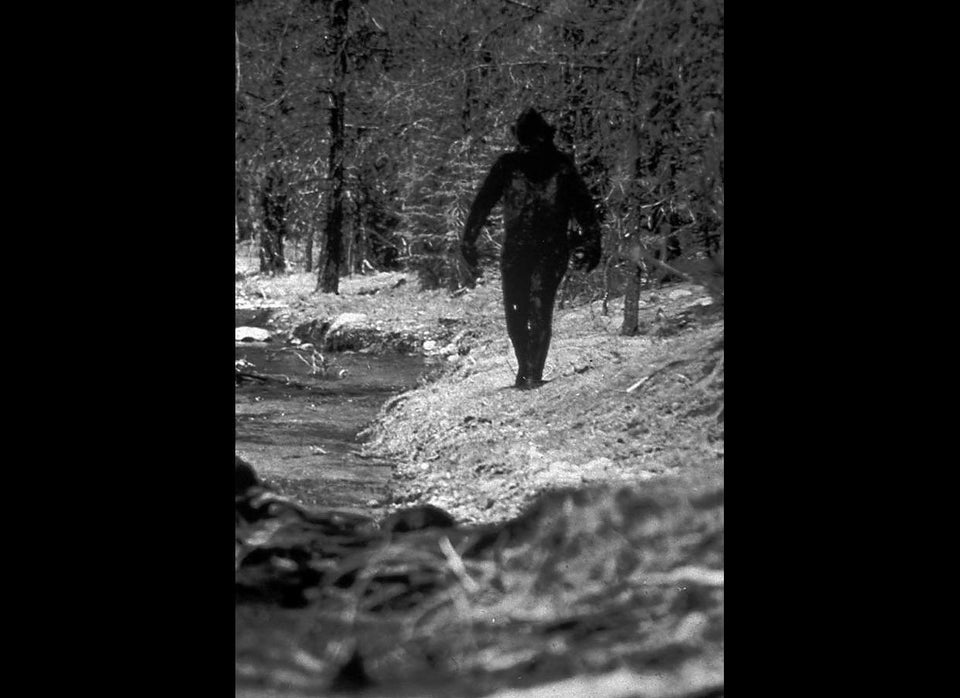Armed with a military-type array of special night-vision and infrared technology, a group of determined hunters has only one mutual outcome on their collective mind: "Finding Bigfoot."
That's exactly what the four-person team of Animal Planet's popular series hopes to accomplish, finding ultimate evidence that groups of tall, hairy, human-like animals exist in the forest and wilderness areas of the world.
"People have been describing these types of animals in many different parts of North America for well over 400 years -- that's indisputable, that people have described seeing them," said Matt Moneymaker, founder and president of the Bigfoot Field Researchers Organization, or BFRO, a network of scientists and amateur researchers interested in Bigfoot and its reported "cousins": Sasquatch, Yeti and the Abominable Snowman.
Bigfoot Through The Years: (story continues after the gallery)
"Our mission is mutifaceted. We collect information and go out in the field to see if we can find scientific evidence, and in that process, try to figure out how these things can be studied scientifically," Moneymaker told The Huffington Post.
According to BFRO's files, since 1996, the number of Bigfoot sightings -- including those with visual evidence -- have produced nearly 32,000 reports.
Those numbers didn't escape the attention of the Animal Planet channel, which teamed Moneymaker and BFRO member James "Bobo" Fay with educator Cliff Barackman and skeptical research biologist Ranae Holland.
Week after week, this determined quartet of Bigfoot hunters goes deep into wilderness areas of North America that most viewers only experience in nightmares.
Watch: The 'Finding Bigfoot' Team On A Nighttime Hunt:
As the skeptic of the group, Holland is often caught between those who believe 100 percent in the existence of Bigfoot -- like her three "Finding Bigfoot" companions -- and skeptics, like herself, who think all Bigfoot tales are nonsense.
"I completely understand and I can relate to where they're coming from," she told Huffington Post. "Yes, I'm skeptical and I still haven't seen the evidence. I can't tell someone they're wrong, nor can I say that I'm right, or we're both wrong and the believers are right."
The ultimate goal of both BFRO and the "Finding Bigfoot" team is to come up with irrefutable evidence that some previously undiscovered species of ape that walks bipedally has successfully eluded capture for centuries.
The bulk of the evidence consists of many footprints, alleged hair samples, photographs and films and, of course, eyewitness accounts.
Probably the most controversial piece of evidence that has been analyzed and scrutinized by believers and skeptics over decades is a piece of film from 1967 widely known as the Patterson film.
Watch The Patterson Film Here:
Shot by Roger Patterson and Robert Gimlin at Bluff Creek in northern California, the film depicts a tall -- reportedly 7 feet high -- hairy animal walking near the creek, away from the two shocked men. As the creature walks toward the woods, it briefly glances over its shoulder at the men.
The animal walked into the woods and into history as the short film has been carefully examined, frame by frame, by researchers and scientists on both sides of the Bigfoot issue, with many believing Bigfoot was merely a man in a costume.

"Contrary to what many people assumed, the footage has never been proved to be a hoax," said BFRO's Moneymaker. "And every scientific examination and analysis of the footage has either fallen into the category of inconclusive or demonstrating something that can't be explained by 1967 technology.
"Many imposters have claimed to be the man in the costume and all of them have been debunked by people who were there," he added.
And what about "Finding Bigfoot's" skeptical scientist's take on the Patterson footage?
"When you look at that film now, and I hear people talking about bulging muscles and fingers moving [see image above], those can very easily be artifacts from the film itself or from later generation copies of it," Holland suggested.
"Physical anthropologists argue both sides of the issue over whether or not it's possible for a human to recreate the walk of the Patterson Bigfoot," she continued. "There's an argument based on the film speed and the camera lens. There are so many elements of this that add to the controversy."
Holland wants compelling, overwhelming, definitive evidence of Bigfoot.
"I just want to know one way or another. Do I want it to be some prehistoric offshoot of man or an independent species, or just an undiscovered primate? First and foremost, I want to know one way or the other."
Moneymaker wants to know, too. Especially since he has a vivid memory of the early morning scary encounter he had in 1994 at the Berlin Wildlife Refuge in Portage County, Ohio.
"There were two animals -- one was much bigger than the other. It came to the tree line right behind me about 15 feet away," he recalled. "It stood there in front of me and growled. If it had been daylight or I'd had the chance to shine a light on it, I would've been able to draw the face, but it was most definitely a Sasquatch -- over 7 feet tall and it was growling at me to let me know I should leave, and I did.
"It wasn't even ferocious, but the message was real clear."
Now in its second season, "Finding Bigfoot" continues to take viewers into remote areas of the U.S. and Canada. Check your local Animal Planet listings to join the hunt.

